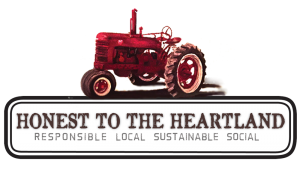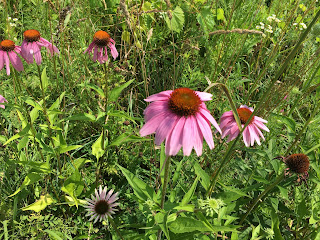 |
| The Fourth Instar |
3.
Crandall had a moment to choose whether he would cross the street to the butterfly display at the gardens or not. The park behind was vast and green in mid July. Out beyond, the blue of the lake was something like the color of a blue enamel, only a gull or two hovering around the dock at the landing and landed boats gently rocking back and forth. On the other shore he could see dome of the Capital building, bright and white. This lake, he had been told by his father, was originally called 'Teepee Lake' by the Ho-Chunk, and more simply 'Beautiful' by the Chippewa. He felt close to the lake at the moment having sailed around its shores nearly daily. He pictured the green of the park as prairie and could see a thousand butterflies, golden and dashing up and down, left and right, over random wildflowers and heard the breeze speak through prairie like a dream catcher might. There was an interplay like this back and forth between the flowers and lakes and he wondered where all of it went eventually. "Let's cross now," the tall man in front him said and his family crossed heading to the front of the building. The younger of the two girls had been griping the entire way, since they left the beer garden, "why do we have to do all of this again," she said, looking up the mother who was holding her hand tightly, the girl trailing behind all the others, and holding back. "We know what this means to your father."
"I don't see why we need to have this one," though, the girl responded back, "we have had so many others in our garden." After getting to the other side of road, the mother dropped her sunglasses down below her eyes onto her nose. "We have been through this so many times, so many times. You know what to do." Crandall could not help but to follow this family as close as he could without standing out. He had the habit of listening to and following other families wherever he went, always interested in what it might be like to live in a larger family of five. It had been he and father and Starla for three years now. He understood his father's work, but he often went his own way. He and his sister rarely saw eye to eye. He felt something like a spying butterfly himself, dashing in and out of the lives of others, then off again to another and another. "The fourth instar is the only one stage that they haven't perfected Fasha, you know that," the father said as they walked into the front of the entrance past desks that were set out for signing up for something Crandall didn't know. "Five dollars each," the young woman at the entrance said. The mother quickly quickly handed the young woman cash. Crandall reached in his own pocket but knew before he even felt that it was empty. He shook his head. That was that. He would come tomorrow with money. But in the meantime he would lose track of this forth instar business across the street from lake beautiful.







































